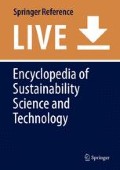Abbreviations
- Austenitic stainless steel:
-
Austenitic steels contain alloys of chromium and nickel (sometimes manganese and nitrogen) structured around the type 302 stainless steel composition of iron, 18 % chromium, and 8 % nickel. Austenitic steels are not hardenable by heat treatment. The most common austenitic stainless steel is type 304.
- Burnup:
-
A measure of the energy generated by fuel atoms that undergo fission. It is normally quoted in megawatt-days per metric ton of uranium metal or its equivalent (MWd/MTU).
- Core plate:
-
In a reactor, the upper and lower core plates support the fuel channels and allow the cooling water into the fuel bundle and assures each fuel bundle is maintained equidistant from each other.
- Fertile fuel:
-
A material capable of creating a fissile fuel upon capture of a neutron. Examples are U238 and Th232 which create Pu239 and U233, respectively.
- Fissile fuel:
-
Capable of undergoing fission by thermal neutrons. The four primary nuclides are U233 U235, Pu239, and Pu241.
- Fissionable fuel:
-
A material capable of undergoing fission via the absorption of a neutron with kinetic energy above a certain level. Examples are U238 and Pu239.
- Half-life:
-
The time it takes for the mass of a radioactive substance undergoing decay to decrease by half.
- Inconel:
-
Refers to a family of austenitic nickel-chromium-based high-performance alloys trademarked by the Special Metals Corporation. Inconel metal is typically used in high-temperature applications and is generally known for its resistance to oxidation and superior ability to maintain integrity in high-temperature conditions.
- Isotopes:
-
Isotopes are different forms of atoms (nuclides) of the same chemical element each having the same number of protons, but a different number of neutrons in the nucleus. Isotopes differ in mass number (the number of neutrons plus protons in the nucleus) but not in atomic number (total number of protons). All isotopes of an element have the same chemical properties, but frequently they have very different nuclear properties.
- Martensitic or ferritic steels:
-
The major alloying addition in martensitic stainless steels is chromium in the range of 11–17 %. The carbon levels can vary from 0.10 % to 0.65 % in these alloys. The high carbon enables the material to be hardened by heating to a high temperature followed by rapid cooling (quenching). Martensitic steels offer a good combination of corrosion resistance and superior mechanical properties, offering maximum hardness, strength, and resistance to abrasion and erosion. Neutron capture cross section is the probability of neutron capture by a nucleus. It is the effective area that a particular atom/nucleus of that isotope presents to absorb a neutron and is measured by a unit (of area) called “barn,” which is 10−24 cm2.
- Nuclear fuel clad or cladding:
-
The outer layer of the fuel rods a barrier between the coolant and the nuclear fuel. It is made of a corrosion-resistant metal that has a low neutron absorption cross section. In today’s modern commercial reactors, cladding is made usually of zircaloy.
- Passivating layer:
-
In the context of corrosion, passivation is the formation of a nonreactive surface film which inhibits further corrosion.
- Plutonium (Pu):
-
Man-made element with atomic number 94. Of the many Pu isotopes, the most noteworthy is 239Pu because it is a fissile isotope and may also be used to make a nuclear weapon. 238Pu, an alpha particle emitter, has found a great application in space missions powering electronic equipment.
- Thermal conductivity:
-
Property of a material that describes its ability to conduct heat.
- Thorium (Th):
-
Naturally occurring element with atomic number 90; the only isotope found in nature is 232Th. Th is more abundant than U. Upon capture of a neutron and subsequent radioactive decays, it forms 233U, which is a fissile isotope.
- Uranium (U):
-
Naturally occurring element with atomic number 92; three isotopes are found in nature, U238, U 235, and U234 with an abundances, respectively, of 99.28 %, 0.711 %, and 0.00057 %. The isotope 235U is the only naturally occurring fissile isotope.
- Uranium dioxide (UO2):
-
An oxide of uranium, a black mildly radioactive crystalline material that is used in nuclear fuel pellets in nuclear reactors.
- Zircaloy:
-
Is a group of alloys mostly consisting of zirconium, with minor additions of tin (often about 1.5 %), iron, and chromium, used as a fuel rod clad material in light-water thermal reactors.
Bibliography
Cochran RG, Tsoulfanidis N (1999) The nuclear fuel cycle: analysis and management, 2nd edn. American Nuclear Society, La Grange Park. ISBN 0-89448-451-6
Knief R (1992) Nuclear engineering: theory and technology of commercial nuclear power, 2nd edn. Hemisphere, Washington, DC. ISBN 978-0-89448-458-2
Glasstone S, Sesonske A (1994) Nuclear reactor engineering: reactor design basics, vol 1. Chapman & Hall, New York. ISBN 0-442-20057-9
Author information
Authors and Affiliations
Corresponding author
Editor information
Editors and Affiliations
Rights and permissions
Copyright information
© 2016 Springer Science+Business Media New York
About this entry
Cite this entry
Tulenko, J.S. (2016). Nuclear Reactor Materials and Fuels. In: Meyers, R. (eds) Encyclopedia of Sustainability Science and Technology. Springer, New York, NY. https://doi.org/10.1007/978-1-4939-2493-6_23-3
Download citation
DOI: https://doi.org/10.1007/978-1-4939-2493-6_23-3
Received:
Accepted:
Published:
Publisher Name: Springer, New York, NY
Online ISBN: 978-1-4939-2493-6
eBook Packages: Springer Reference Earth and Environm. ScienceReference Module Physical and Materials ScienceReference Module Earth and Environmental Sciences

